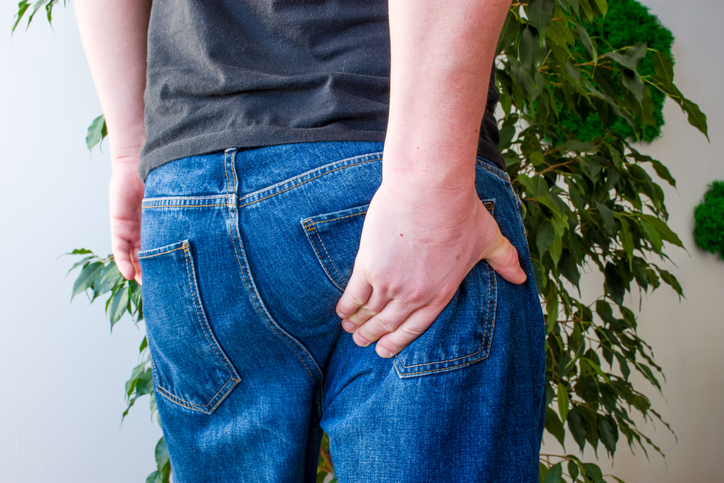La sciatica is a condition that results in pain, numbness or tingling in a leg. This condition is often caused by a herniated disc.
There’s nothing quite like a herniated disc occurs when the inner part of the spinal disc ruptures or bleeds. The gelatinous material contained in the disc can then escape and irritate the nearby nerves.
If you suffer of sciatica, it is important to consult a doctor immediately. In this article, we will discuss the connection between numbness of the leg and herniated disc. We will also discuss treatment options for these two conditions.
Anatomy of the lumbar spine and intervertebral discs
La lumbar spine is made up of five vertebrae, stacked on top of each other. Between the vertebrae are intervertebral discs, which act as cushions and allow the spine to move smoothly.
There’s plenty of discs are made up of a gelatinous substance called the nucleus pulposus, surrounded by a tough outer layer called fibrous ring.
Le disk acts as a shock absorber, absorbing shock and preventing the vertebrae from rubbing against each other. When a disc is damaged, it can bulge or rupture, causing pain and discomfort.
In severe cases, a herniated disc can put pressure on the nerves, causing numbness or weakness in the legs.
What is a sciatic nerve exactly? Definition
Le sciatic nerve is the longest and widest single nerve in the human body. It starts from the lower back, crosses the buttocks, descends along the legs and ends in the feet.
The nerve is made up of five different roots that combine to form a single trunk. the sciatic nerve transmits signals from the brain to the muscles of the legs, and provides sensations to the skin of the leg and foot.
Le sciatic nerve may be irritated or compressed anywhere along its length, causing pain that radiates down the nerve. Sciatica is a condition caused by compression of the sciatic nerve and results in pain, numbness or tingling in the leg.
Zoom on the herniated disc
La herniated disc remains the main cause of numbness radiating to the leg. Most often, back pain is triggered by postural defects that can contribute to the development of a herniated disc.
More rarely, the pain and tingling typical of sciatica or cruralgia can affect both legs. This is the typical situation triggered by generalized muscle irritation, in the case of a herniated disc involving both nerve roots or especially due to stenosis of the vertebral canal (narrow lumbar canal).
It is worth remembering that, if the cause responsible for the pain and tingling in the leg (associated with low back pain) is a herniated disc, the only cure is surgical removal if conservative treatment has no effect within 9 months and there are severe sensory/motor deficits.
What is the link between leg numb and herniated disc ?
The nervous system runs through the whole body by grafting itself onto the vertebrae through the nerve ganglia which also reach the internal organs.
The well-being of the nervous system therefore has repercussions on the well-being of the entire body. The nerves extend from the spinal cord to the extremities: if, for various reasons, an intervertebral disc bulges or if a herniation presses on the sciatic nerve, pain can also affect the buttocks, legs and back.
There’s nothing quite like a herniated disc can cause a lot of back pain. But did you know that it can also cause numbness in the legs ?
Irritation of the sciatic nerve due to herniated disc is a common condition that can cause paresthesias or disturbances in nerve impulses. When a spinal disc herniates or ruptures, it can put pressure on the sciatic nerve and cause pain, numbness, tingling and weakness in the spine. leg concerned.
Behind symptoms such as tingling, can hide various problems other than a herniated disc. We think in particular of a neurological attack, a deficiency in vitamins, a cerebrovascular accident, the syndrome of the legs without rest, or circulatory problems.
In the most severe cases, the patient may be unable to move the leg at all.
What are the accompanying symptoms?
The numbness of legs can often be accompanied by other symptoms, such as electric shock sensations, pain in the leg, weakness or tingling and numbness in the foot and toes. These other symptoms can help pinpoint the underlying cause of the numbness of the leg.
For example, if the numbness is accompanied by an electric shock sensation, it may indicate a nerve problem. Paresthesias could also come from circulatory or muscular damage.
It is therefore important to pay attention to any other accompanying symptoms in order to better understand the cause of the numbness of the leg.
Leg numb and herniated disc : What to do ?
Any numbness of the leg should be checked by a doctor to make sure it is not caused by a more serious condition, such as a blood clot. However, if the numbness is determined to be due to herniated disc, several steps can be taken to get relief.
First of all, it is important to rest the leg affected as much as possible and to avoid any activity likely to aggravate the situation. Ice can also be applied to the area for 15 to 20 minutes at a time to help reduce inflammation. The application is generally done at the lumbar level because the numbness comes from a problem at this level.
In some cases, over-the-counter pain relievers may be recommended. If numbness persists or worsens, it is important to see a doctor as soon as possible for further evaluation.
In this case, your doctor may order clinical and medical imaging tests to get a better idea of what's going on. If the tests are normal, the numbness may be due to a temporary problem like anxiety or dehydration.
However, if the tests reveal a more serious problem, such as herniated disc or an inflammatory condition, your doctor will develop a treatment plan accordingly. Either way, it's important to see your doctor to make sure the numbness doesn't go away on its own.
How to treat herniated disc ?
The conservative treatment of herniated disc
There’s nothing quite like a herniated disc can be a painful and debilitating condition. However, there are a number of conservative treatments which can help relieve pain and improve functioning. One of the most common treatments is physical therapy.
Heat and ice therapy can also be helpful in reducing pain and inflammation. Applying ice for 20 minutes at a time, several times a day, can help numb the pain and reduce swelling.
Applying heat for 20 minutes at a time can help loosen tight muscles and increase blood flow to the area. Thanks to these conservative treatments, many people manage to relieve their herniated disc without resorting to surgery.
The drug treatment of herniated disc
The treatment options of a herniated disc vary according to the intensity of the symptoms. For example, if pain and inflammation are the primary concerns, over-the-counter or prescription anti-inflammatories may be recommended.
If muscle spasms are also a problem, muscle relaxants can be added to the treatment plan.
In cases where the pain is more severe, opioids may be prescribed. Antidepressants and antiepileptics may also be used in some cases to help control nerve pain.
Ultimately, the goal of treatment is to reduce pain and improve function. A variety of different drugs can be used to achieve this goal.
Treatment of herniated disc by different therapies
You may have tried over-the-counter medications and seen little or no improvement. If so, you can seek professional help.
- Physiotherapists (physiotherapists) focus on exercises and stretches that strengthen the muscles around the spine, providing support and stability.
- Osteopaths use manipulative techniques to improve alignment and relieve pain.
- Chiropractors also use manipulation, as well as adjustment, to improve spinal alignment and function.
- massage therapists use gentle or deep massage to relax muscles and relieve pain.
With the right treatment, you can find relief for your herniated disc and take back your life.
Treatment of herniated disc : Devices and gadgets
Depending on the severity of your condition, there are a number of different treatments. For people with mild forms ofherniated disc, a lumbar belt may be enough to relieve them. This type of device is worn around the waist and helps support the lower back, relieving pressure on the discs.
For people with more severe forms ofherniated disc, traction devices may be recommended. These devices work by gently stretching the spine, which can help reduce pressure on the discs and relieve pain.
There are a number of different traction devices, so it's important to ask your doctor which would be right for you.
However, if devices such as lumbar belts and traction devices can be helpful in providing relief to people with herniated disc, however, they have limitations.
For example, lumbar belts can only be worn for a certain amount of time each day, and excessive use can actually make the pain worse. The devices of traction also have limitations: they are not necessarily effective for everyone and they can be expensive.
Don't like appliances? do exercises to the same effect!
There are a number of exercises that can help replicate the effect of lumbar traction and relieve pain due to herniated disc. One such exercise involves placing two chairs back to back, with the backs of the chairs supporting the arms.
Another exercise is the Swiss ball pull-up, which involves lying face down on a large bouncing ball with your head forward and your feet barely touching the ground.
Ultimately, these exercises can provide significant (albeit temporary) relief to people with herniated disc.
relieve a herniated disc : Massagers
Once a disc is herniated, it can sometimes take weeks or even months for the pain to go away. Many people use massage therapy to relieve pain caused by a herniated disc. massagers such as massage guns are increasingly becoming a popular option for home massage therapy.
These devices use various massage techniques, such as shiatsu and rolling massages, to relieve pain. Some machines even have heat settings to further relax the muscles.
It should be noted that massages generally help to reduce pain temporarily, and that they must be associated with an active approach to derive the best benefits. Indeed, they are not unanimous from a scientific point of view, and almost never treat the main cause of the herniated disc.
relieve a herniated disc : Electric stimulator (TENS)
TENS is a machine that uses electrodes to stimulate muscles and nerves in the lower back, or any other affected area. The electrical impulses help block pain signals from reaching the brain, giving you welcome relief.
Additionally, TENS treatments can help reduce inflammation and promote healing by stimulating blood flow to the affected area.
As with massages, TENS temporarily relieves symptoms in the majority of cases, and should ideally be used in addition to a proactive approach based on therapeutic exercises and daily modifications (posture, sleep, stress, etc.) .
Invasive treatments for herniated disc : is it effective?
There are a number of invasive treatments for herniated disc, and choosing the right one can be a tough decision. One option is surgery, which involves making an incision in the back and removing the herniated disc.
It is generally considered a last resort, as it is very invasive and carries the risk of serious complications. Another option is the percutaneous laser disc decompression, which involves inserting a laser into the disc to shrink it.
This procedure is less invasive than surgery, but it can be very expensive and not covered by insurance.
The third option is the spinal fusion (lumbar arthrodesis), which involves fusing the vertebrae together to stabilize the spine. This procedure is also very invasive and carries the risk of serious complications.
Ultimately, the decision to choose a treatment should be made by a qualified physician after careful consideration of the risks and benefits.


